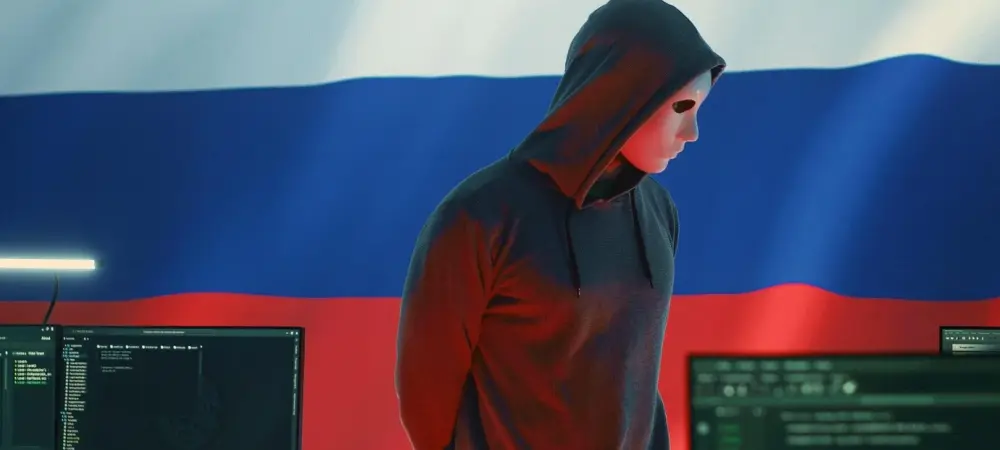The landscape of international cyber warfare has undergone significant transformations with Russia’s intricate strategy for digital offensives that revolve around outsourcing to maintain strategic ambiguity. Emerging from the tumultuous aftermath of the Soviet Union’s collapse in 1991, this strategy leverages a network of private companies, hacktivist groups, and cybercriminals to bolster the Kremlin’s cyber capabilities. The economic volatility and institutional breakdown during the 1990s laid the groundwork for this approach. At its core is a model born from necessity, where the chaotic environment drove skilled IT professionals and former intelligence agents into cyber operations, masking state-sponsored efforts beneath the guise of non-state actors. This approach allows significant influence over global cyber operations while maintaining an elusive public face.
The Backbone of Russia’s Cyber Ecosystem
At the heart of this cyber warfare strategy are Russia’s state entities, notably the Federal Security Service (FSB), the Foreign Intelligence Service (SVR), and the Main Intelligence Directorate (GRU). These bodies craft the blueprint for a sprawling cyber ecosystem where state-sponsored actors and independent organizations intersect. Each agency, while distinct in its operations, collaborates to expand Russia’s digital influence globally. The FSB often spearheads internal security measures, while the SVR and GRU focus on foreign intelligence and military objectives, respectively. This complex infrastructure becomes further convoluted as these state agencies frequently outsource their operations to a constellation of non-state actors. The outsourcing strategy introduces layers of operatives, where governmental bodies are the nucleus, surrounded by orbiting rings of private IT firms, hacktivist groups, and eCrime syndicates, effectively distancing direct links back to the Kremlin. This model of outsourcing introduces both operational and strategic advantages. On one hand, it enables Russia to expand its cyber operations more cost-effectively by leveraging external expertise without the need to maintain large government-owned cyber units. On the other hand, it enhances Russia’s cyberspace anonymity by blurring the lines of attack attribution and enabling plausible deniability. As a result, cyber activities orchestrated through multiple layers of conspirators make it increasingly challenging for global cybersecurity entities to pinpoint the true perpetrators behind attacks.
The Role of Private Companies and Non-state Actors
Russia’s digital maneuvering heavily relies on its network of private companies and non-state actors. Major players like Kaspersky and Positive Technologies contribute to this strategy by providing essential services like vulnerability research and tool development. Supporting these giants is a cadre of smaller entities such as NTC Vulkan, which offer specialized cybersecurity capabilities. The integration of these companies into Russia’s cyberspace game plan ensures a steady stream of technical advances and cutting-edge solutions, augmenting state-run operations with private sector agility and innovation. Beyond the technical domain, public relations firms like the Social Design Agency play a pivotal role in disseminating disinformation through grand-scale efforts like the Doppelgänger campaign. These operations, designed to mislead and manipulate global narratives, impersonate credible news outlets and government platforms to spread falsehoods.
Hacktivist collectives and eCrime outfits, including CyberArmyofRussia_Reborn and groups like Conti and BlackBasta, further illustrate this hybrid approach. Hacktivist groups, often aligned with the GRU’s APT44, engage in cyber-espionage and sabotage, while eCrime syndicates oscillate their allegiances according to Russia’s tactical needs. This dynamic allows Russia to adapt quickly to changing geopolitical landscapes, enabling a fluid cyber stance that can easily shift targets or tactics. The decentralized yet coordinated nature of this network exemplifies an advanced form of cyber warfare, where state and non-state entities merge to undertake operations that are both resilient and complex.
Strategic Implications and Future Considerations
Russia’s cyber warfare strategy hinges on key state entities like the Federal Security Service (FSB), the Foreign Intelligence Service (SVR), and the Main Intelligence Directorate (GRU). These agencies collaboratively design a vast cyber network, blending state-supported agents with independent groups. While the FSB often handles internal security, the SVR and GRU focus on foreign intelligence gathering and military-related goals. The complexity of this system is amplified by these agencies frequently outsourcing operations to a network of non-state actors. This web of operatives sees government bodies as the core, surrounded by private IT firms, hacktivist collectives, and cybercrime syndicates, effectively shielding direct Kremlin involvement. This outsourcing provides dual advantages. Russia can expand operations cost-effectively by utilizing external cyber talents and can mask its activities through increased anonymity. This makes attributing attacks harder for global cybersecurity experts, complicating the task of identifying the true attackers.

